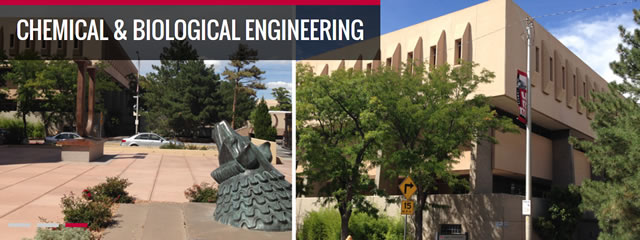
Chemical and Biological Engineering ETDs
Publication Date
6-3-1968
Abstract
A study has been undertaken to determine the relationship of metallic-foil joining and joining parameters to the strength of joints in a high-quality extruded nuclear graphite. The materials chosen for investigation as joining materials on the graphite of interest were considered to be representative of the Group IVA, VA, and VIA transition metals and iron. The parameters used for joining yielded either a fully diffused joint, which was not temperature-limited with respect to service conditions or a continuous-carbide-interface joint, which was temperature -limited. The metal chosen from Group IVA for joining was zirconium in the form of 0.0005 in. -thick foil. A series of joining temperature was investigated: it was shown that a joint having a graphite-carbide-graphite interface was produced until temperature in excess of the zirconium carbide - carbon eutectic were utilized. The graphite joints made with zirconium possessed the highest strength of all samples tested in room-temperature flexure if the continuous-carbide interface was developed. This high strength is believed to be related to the stability, i.e., the high heat of formation, of the carbide. Joints made with the Group VA metal, tantalum, possessed a continuous-carbide interface, since it is not practical to exceed the tantalum carbide-carbon eutectic temperature. This series exhibited increasing room-temperature flexure strength with increasing joining temperature. The general strength values were lower than those observed for material joined with the Group IVA foil. Two metals, molybdenum and tungsten, from Group VIA were evaluated. These metals were chosen because of their relatively low neutron absorption cross sections and also because of their availability in the form of 0.0005-in.-thick foil. Both molybdenum and tungsten have eutectics between the carbide and carbon at temperatures that make the production of a fully diffused joint both feasible and practical. Temperatures which yielded both carbide-interface joints and fully diffused joints were studied. Tests were performed on the various joint types using both room-temperature flexure tests and elevated-temperature tensile tests. The results obtained for this Group indicated that fully diffused joints yielded higher strengths over the range of testing temperatures. Tensile tests were performed on fully diffused joints at temperatures in excess of the joining temperature and these samples possessed strengths comparable to conventional pitch-bonded graphites tested a similar temperatures. In general, the only difference noted between tungsten- and molybdenum joined material was the temperature required to develop a particular kind of joint structure, i.e., fully diffused or carbide interface. In addition to the properties developed with these joining materials, it was noted that, in order for significant amounts of graphite to be precipitated out of the carbide single phase field, it is necessary to have a phase boundary which has decreasing carbon solubility with decreasing temperature. This condition has been observed in the molybdenumcarbon system and for this reason a significant amount of well-ordered precipitated flake graphite is observed. Finally, joints were made with 0.0005-in.-thick foil as the joining medium. A fully diffused joint was produced when temperatures in excess of the iron carbide-carbon eutectic were used. Joints made at temperatures lower than this value showed almost no strength. This feature was in keeping with the observation that strong carbide-interface joints are produced by carbides that have high negative heats of formation and that iron, bonded graphite which has a positive heat of formation, is comparatively weak. X-Ray diffraction analysis and metallographic evaluations have been made on all materials joined; they indicate that failure usually occurs at the carbide-graphite interface for a solid-carbide joint. In the case of the fully diffused joint the metallography and X-ray diffraction results show that failure occurs in the precipitated primary graphite. The conclusions of the study are that fully diffused joints are superior to solid-carbide joints in elevated temperature tests. Also, the strongest solid-carbide joints will be produced with zirconium. Increasing the joining temperature generally results in increased roomtemperature flexure strength for a solid-carbide joint.
Document Type
Thesis
Language
English
Degree Name
Chemical Engineering
Level of Degree
Masters
Department Name
Chemical and Biological Engineering
First Committee Member (Chair)
Kenneth Edward Cox
Second Committee Member
Unknown
Third Committee Member
Unknown
Fourth Committee Member
Thomas T. Castonguay
Recommended Citation
Sandstrom, Donald James. "Joining Graphite to Graphite with Transition Metal Foils." (1968). https://digitalrepository.unm.edu/cbe_etds/105
